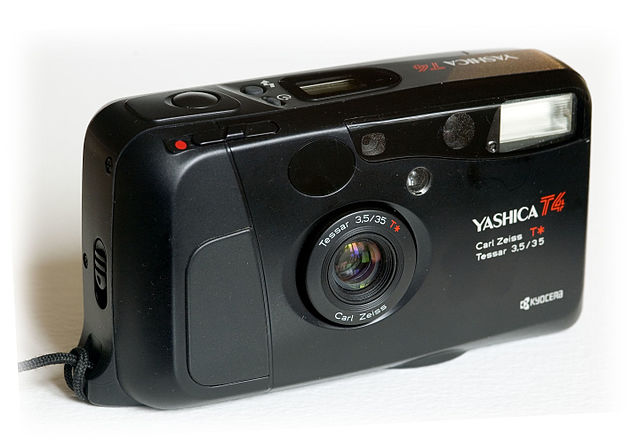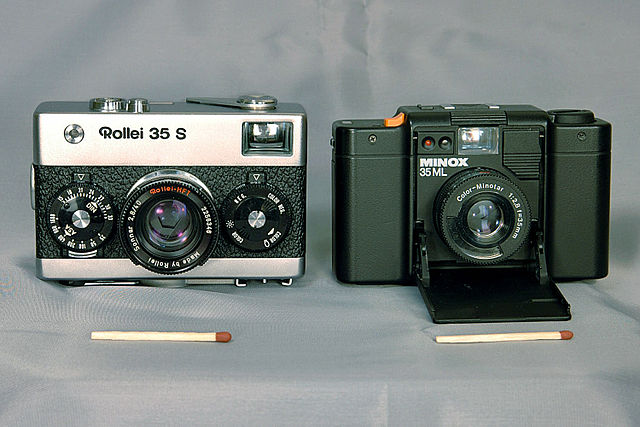126 film is a cartridge-based film format used in still photography. It was introduced by Kodak in 1963, and is associated mainly with low-end point-and-shoot cameras, particularly Kodak's own Instamatic series of cameras.
The 126 film cartridge.
A photo of the Holburne Museum of Art, Bath, taken with 126 film and illustrating the square format.
126 negative strip (converted to positive) with numbered leaders on a roll of 20 exposures from the 1970s showing the manufacturer text "Kodak Safety Film" indicating acetate base (non-nitrate).
Kodak Instamatic X-15 with open door and loaded 126 film cartridge
A point-and-shoot camera, also known as a compact camera and sometimes abbreviated to P&S, is a still camera designed primarily for simple operation. Most use focus free lenses or autofocus for focusing, automatic systems for setting the exposure options, and have flash units built in. They are popular for vernacular photography by people who do not consider themselves photographers but want easy-to-use cameras for snapshots of vacations, parties, reunions and other events.
A point-and-shoot digital camera with optical viewfinder made by Canon, specifically the IXUS 850 IS, early 2010s
A point-and-shoot film camera made by Yashica with a Tessar lens, early 1990s
Two film point-and-shoot cameras, Rollei 35 from 1966 and Minox 35ML from 1985
Point-and-shoot digital camera using live preview for a picture in a church in Norway








